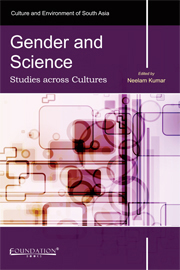Book contents
- Frontmatter
- Contents
- List of Contributors
- Acknowledgements
- Introduction: Reflections and Realities across Cultures
- Section I Approaches and Perspectives
- Section II Illustrative Examples
- 6 Women and Science in the Netherlands: A Dutch Case
- 7 Japanese Women Scientists: Trends and Strategies
- 8 Saudi Women: Their Role in Science and Education
- 9 Changing the Facts: Gender Dimensions of the South African Public Science System
- 10 Demographic Inertia and the Glass Ceiling in American Science (1979–2000)
- 11 Women in Science in France
- 12 Women and Science: Issues and Perspectives in the Indian Context
- Conclusion: The Persistent Patterns!
- Bibliography
- Index
11 - Women in Science in France
from Section II - Illustrative Examples
Published online by Cambridge University Press: 05 May 2013
- Frontmatter
- Contents
- List of Contributors
- Acknowledgements
- Introduction: Reflections and Realities across Cultures
- Section I Approaches and Perspectives
- Section II Illustrative Examples
- 6 Women and Science in the Netherlands: A Dutch Case
- 7 Japanese Women Scientists: Trends and Strategies
- 8 Saudi Women: Their Role in Science and Education
- 9 Changing the Facts: Gender Dimensions of the South African Public Science System
- 10 Demographic Inertia and the Glass Ceiling in American Science (1979–2000)
- 11 Women in Science in France
- 12 Women and Science: Issues and Perspectives in the Indian Context
- Conclusion: The Persistent Patterns!
- Bibliography
- Index
Summary
This chapter focuses on women in academic science and engineering and the education paths that lead to such careers in France. It situates the milestones in women's education within the context of historic-political struggles surrounding sexual equality in France. It also analyses women's place in scientific public employment using the recent data relating to universities and research institutes. The chapter examines the unique French dual university-Grande Ecole (elite higher education school distinct from university) system and explains it with a focus on the failure of co-education in the Ecoles Normales Supérieures (elite higher education schools for training teachers and researchers). The final section describes recent government actions to improve the situation for French women in science.
Historical background
Public education for women in France developed in the nineteenth and twentieth centuries (Montreynaud 1992–2000, Préfecture d'Ile-de-France 1995). The lycées (secondary public schools) created by Napoléon in 1808 were closed to women. Primary schools for girls were first established in 1836, and the first women's école normale (school to educate primary school teachers) was opened in 1838. Girls' education was not compulsory at that time and their curriculum was not comparable to that of boys. The first woman to complete her baccalauréat (examination ending secondary school and giving access to university) was Julie Daubié in 1861. She prepared herself for this exam and was allowed to sit for it only after Empress Eugenia intervened.
- Type
- Chapter
- Information
- Gender and ScienceStudies across Cultures, pp. 227 - 263Publisher: Foundation BooksPrint publication year: 2012

